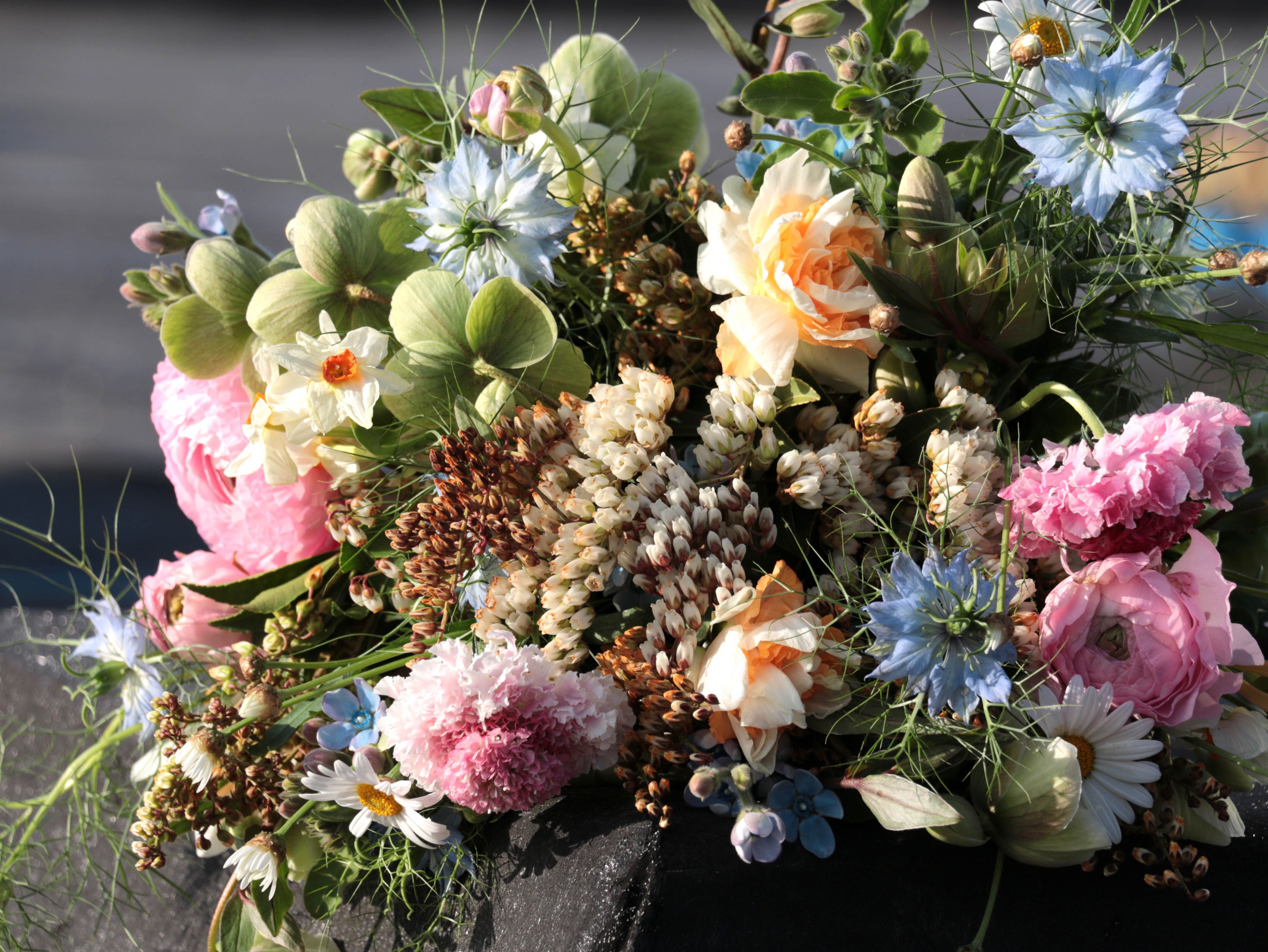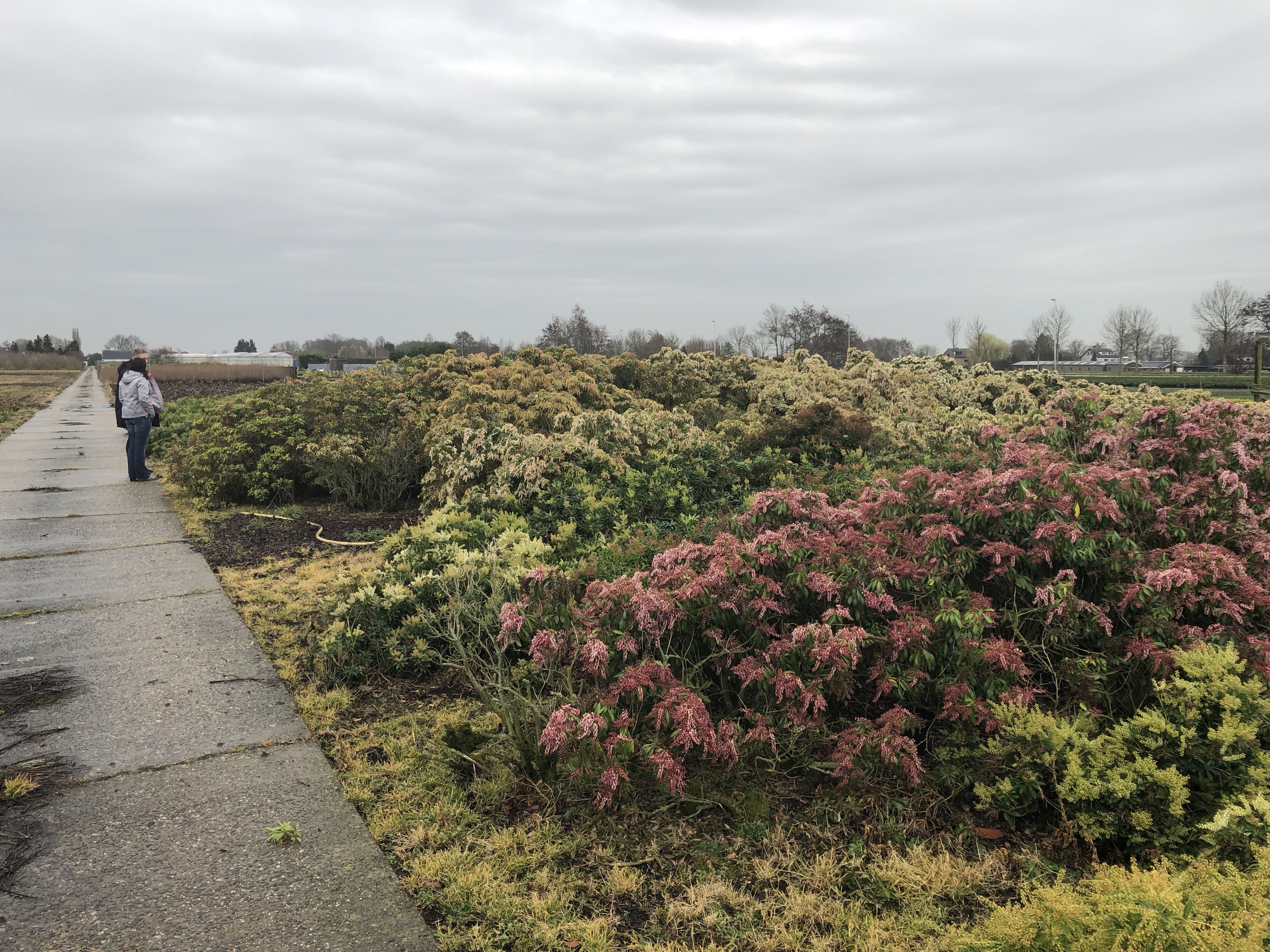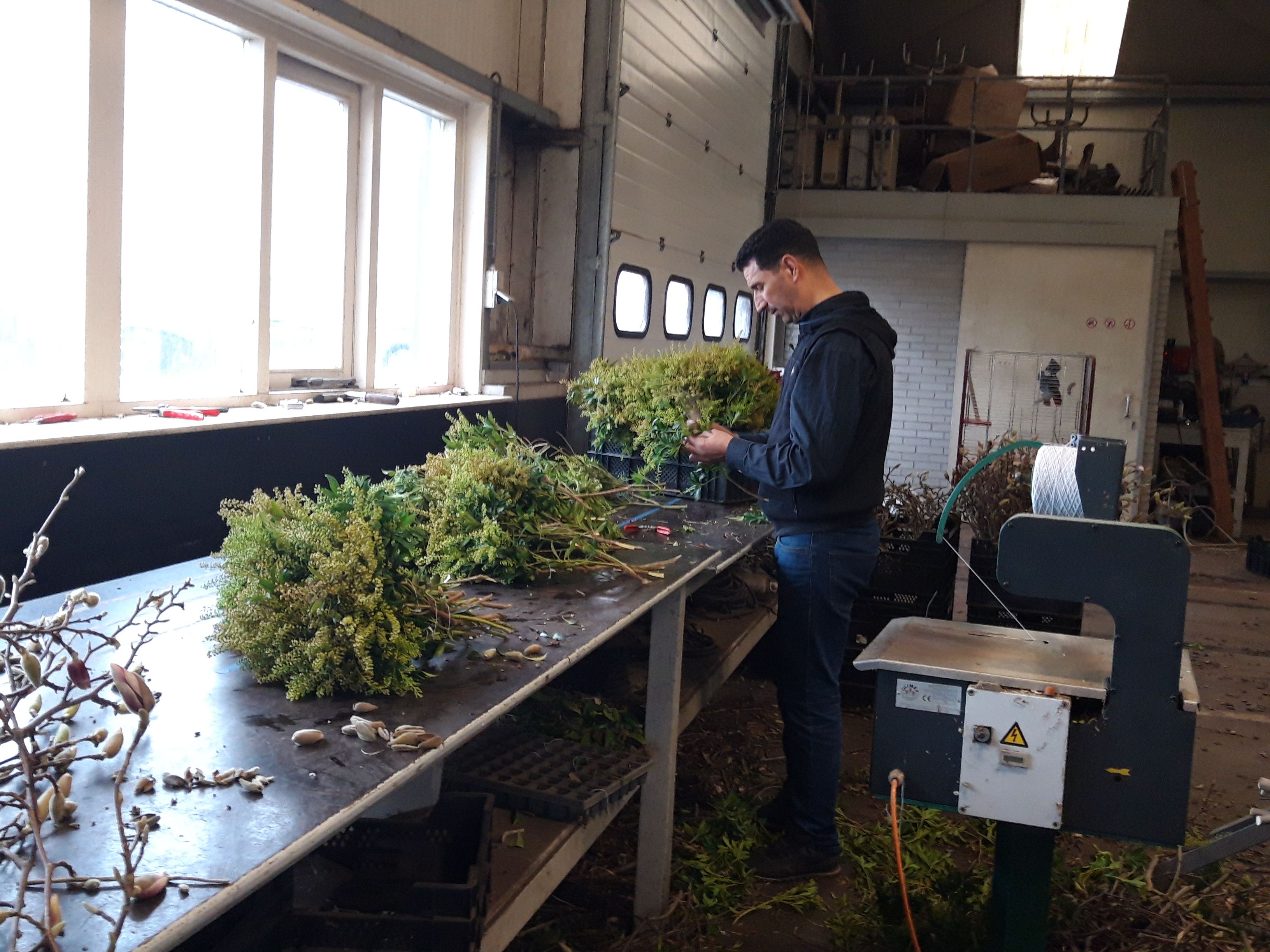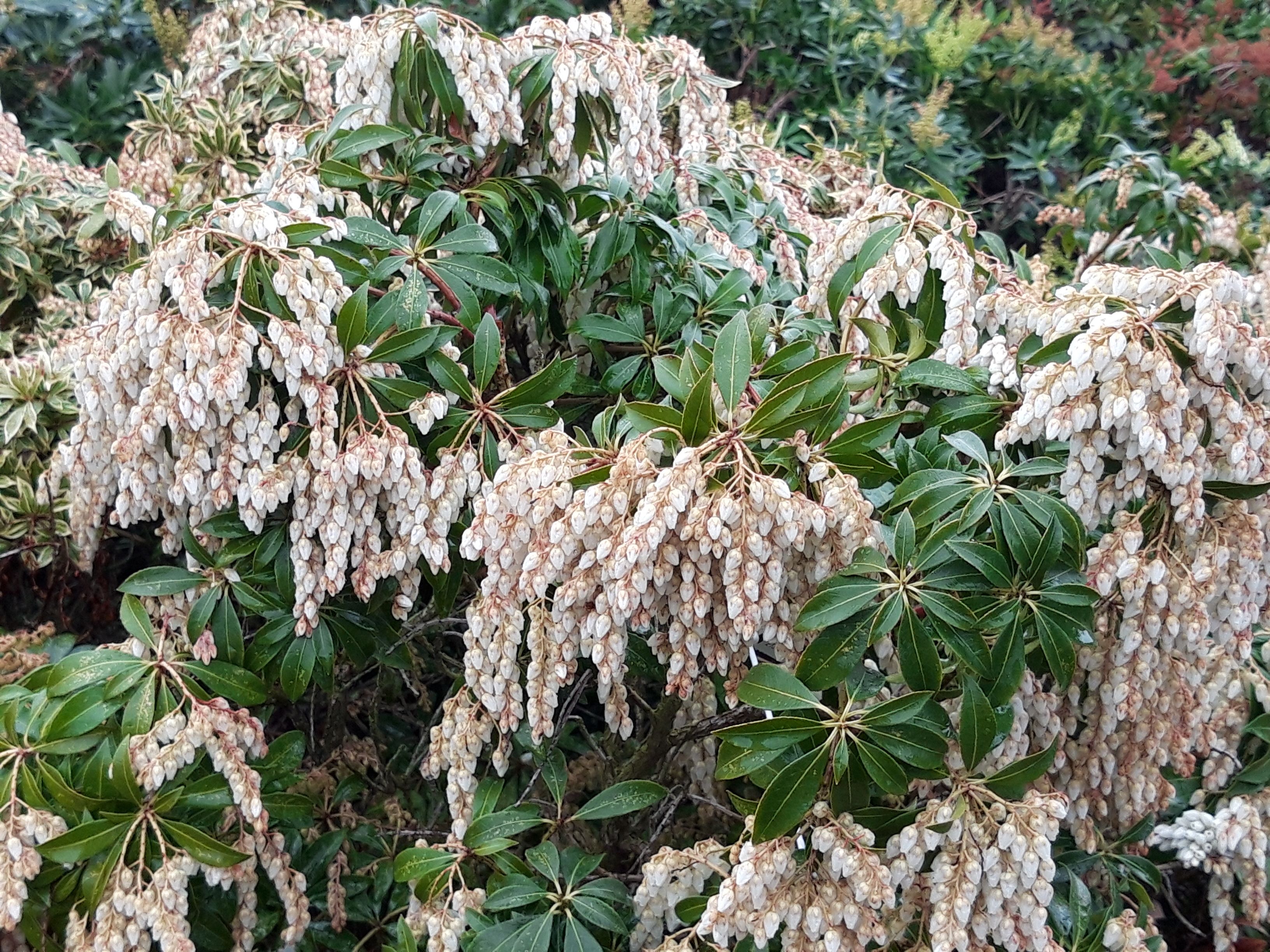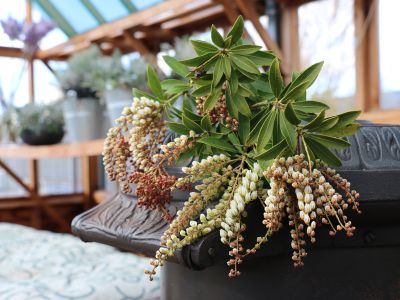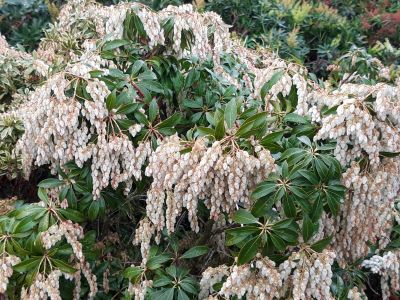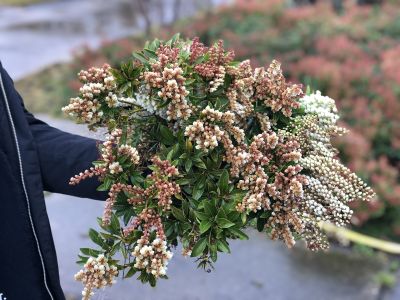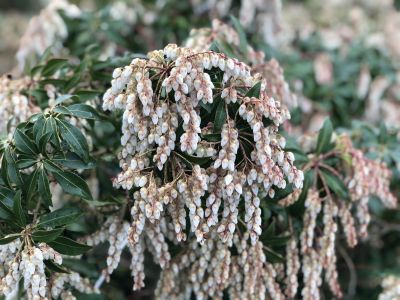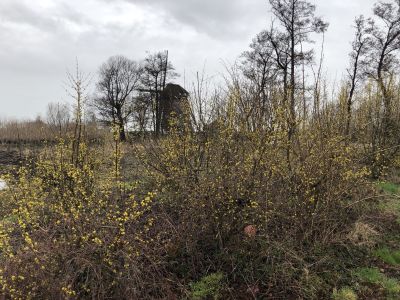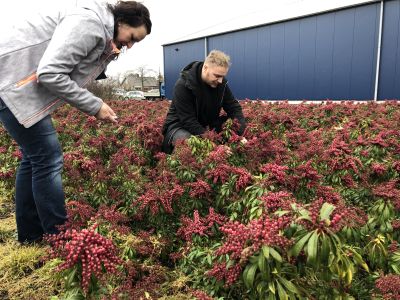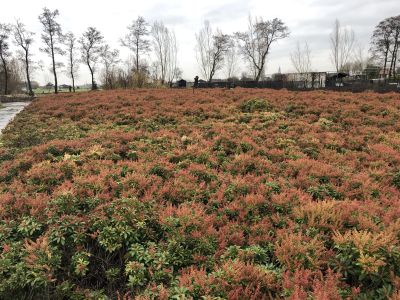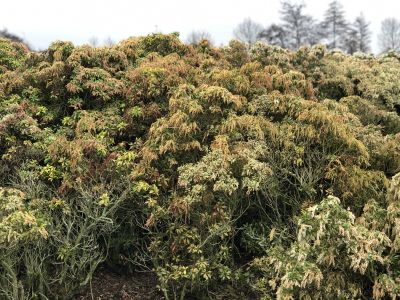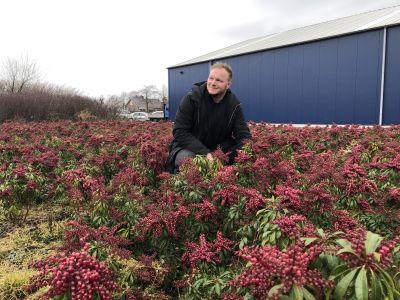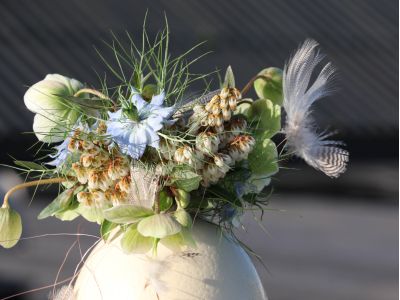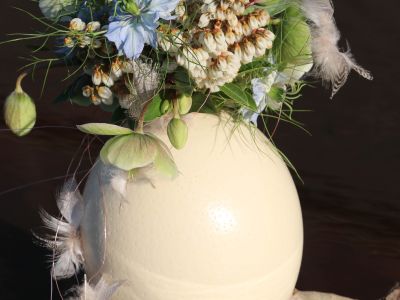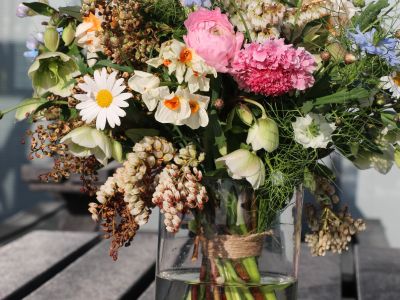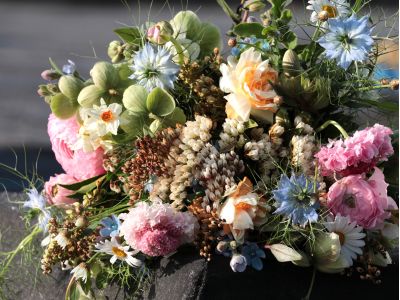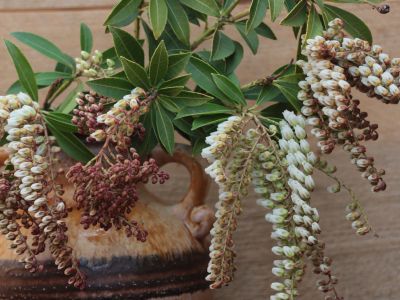Pieris japonica Cupido
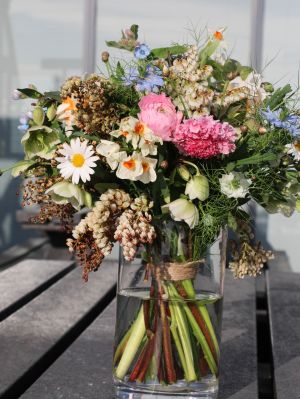
Calendar
In the spotlights
This week we visited Nibo Floriculture for our weekly spotlight product. Nico and Annette, the two owners of the company, grow skimmia, magnolia and viburnum, among other things. We were drawn by the thriving pieris. Nibo grows six types of flowering pierises, all for cutting. A beautiful exclusive product that is only available for a short time. The company has been growing special products for generations.
Looking for new varieties
Nico and Annette are always looking for new and special shrub varieties. Nico is originally a tree grower and therefore has many contacts with tree growers. From this growing group, Nico examines whether there are shrub varieties that can be used for the production of cut flowers. They also get inspiration in arboreta (these are gardens with trees and plant collections). Annette has a great understanding of color and shape as a painter and is therefore closely involved in the assessment of novelties from this point of view. The qualities on which the shrubs are assessed are, for example, vase life, productivity, distinctive in color, shape, length and / or vase life, workability, load factor and standardization in lengths. In addition, the product must be compatible with the harvest schedule, environmentally friendly and profitable. You must also be able to earn a living with it! Of all test varieties, they always hope to be able to use one out of ten for cutting.
Multiple varieties
Frank, the son of Nico and Annette, took us to the different plots of land where the products grow. All their crops are grown outside. Fortunately we were given the tour by car, since we had to deal with our typical Dutch rainy weather during our visit. Driving along these undulating, colored pieris fields really brought us into the holiday spirit. As if you are driving through a beautiful foreign landscape. Many of these pieris bushes are 20 years old and they are still productive.There are different pieris varieties on these fields, each with its own color. They grow "Cupido", "Purity", "Select", "Valley Valentine (Red)", "Valley Rose (Pink)" and "Prelude". These varieties are all beautiful products with a long vase life. In the autumn and winter the branches are marketed with just the buds and then they have a vase life of at least three weeks. These buds themselves are of decorative value and will no longer open in the vase. In the spring, when the pieris is cut with blooming, they have a shelf life of approximately 2 weeks. When these varieties are used in outdoor presentations (for instance funeral arrangements), the vase life is often even longer because it is generally somewhat colder outside. The company does not breed new varieties; they are being cultivated by other plant breeders.
Pieris Japonica 'Cupido'
In the spotlight this week, "Cupido". A special variety, with thick bunches of flowers that will make your heart beat a little faster. The flowers have a white color with a salmon-colored glow. The plant has beautiful dark green elliptical leaves that stay green for a long time. Flower clusters between 5 and 12cm hang on the pieris’ branches. This product gives you a real spring feeling! For a good vase life you can add a chlorine pill or a bag of shrub food to the water in the vase.

The cultivation
Pieris is part of the heather family (Ericaceae) which also includes the azalea and the rhododendron. These occur in mountain areas in Southeast Asia and in the east of North America and Cuba.
From shrub to cut flower
Nico’s garden has a rich history. The garden was established in 1919 by his grandfather for rose stems and occulated roses. During the Second World War, the garden served as a vegetable garden and even potatoes and tobacco were grown. After the war, the garden was restored to its original state with the original products. Many other crops were added later. Nico joined the company in the 1970s and his grandfather retired.
In the mid-1970’s, Nico began expanding its sales to garden centers in the Netherlands with the shrubs that were then included in the range. It was through his brother Hans that Nico came in contact with the cut flower world. Hans had followed the florist training in Aalsmeer. He cut the shrubs and conifers of the Nico nursery for exporters at the flower auction in Aalsmeer. Hans set up a Christmas trade with many luxury conifer varieties. Nico went along with this and started growing skimmia and pieris for this Christmas trade.
In the early nineties, cultivation was expanded with products for cutting, such as Cotinus, Photinia, Leucothoe and Ilex Blue Prince. Nibo Sierteelt was officially established in 1993, in addition to Nico’s existing company. Nibo focused entirely on the production of cut shrubs and boxwood for the auctions. Hans was always able to introduce and market new products. The death of Hans in 1997 was therefore a big blow to the family and the company. Fortunately, his view on cultivation is still visible in the company and cut flowers are still very much loved!
Cultivation
Due to the slow growth and costs of the plant material, the cultivation of the pieris requires a substantial investment! After that it is a challenge to get the pieris to bloom. When the plant is five years old, the first branches can finally be cut. After that you can cut every year, provided that buds are created.The pierises are grown on peat soil. This is essential for the pieris, because they thrive best on rich peaty soil. They just love water.A pieris does not need to be pruned, because the plant actually grows very compact. Cutting the bush for the cut flowers is therefore not easy. It is possible that the plant will die if this is not done properly. It is always a challenge to cut the plant in such a way that it can sprout again; they had to learn the hard way how to get the best results. Fortunately, they have very skilled staff who now have a good grasp of this!
MPS-A certified
Even before customers started asking about it, the company was MPS-A certified. All plants grow outside, so no heating is required, biological control is used and all plants receive water via rainwater. That quickly makes you super sustainable! When the viburnum, skimmia and pieris are in bloom, they attract all kinds of insects that migrate across the land in large swarms. In addition, the company is monitored by the regional Bird Working Group. As there are many plants on the nursery for a long time, there are many bird species that nestle in the crop. The group consists of dozens of species of birds including the kestrel, blackbird, jay, jackdaw, pigeon, all kinds of ducks, swans, coots, moorhen, starling, thrush, woodpecker, greenfinch, pheasant, grebe, lapwing, oystercatcher and all kinds of sparrows and titmice. In the polder area adjacent to the company the black-tailed godwit, blue heron, the stork, spoonbill and the egret still live.
FloraPodium, 21 March 2019






